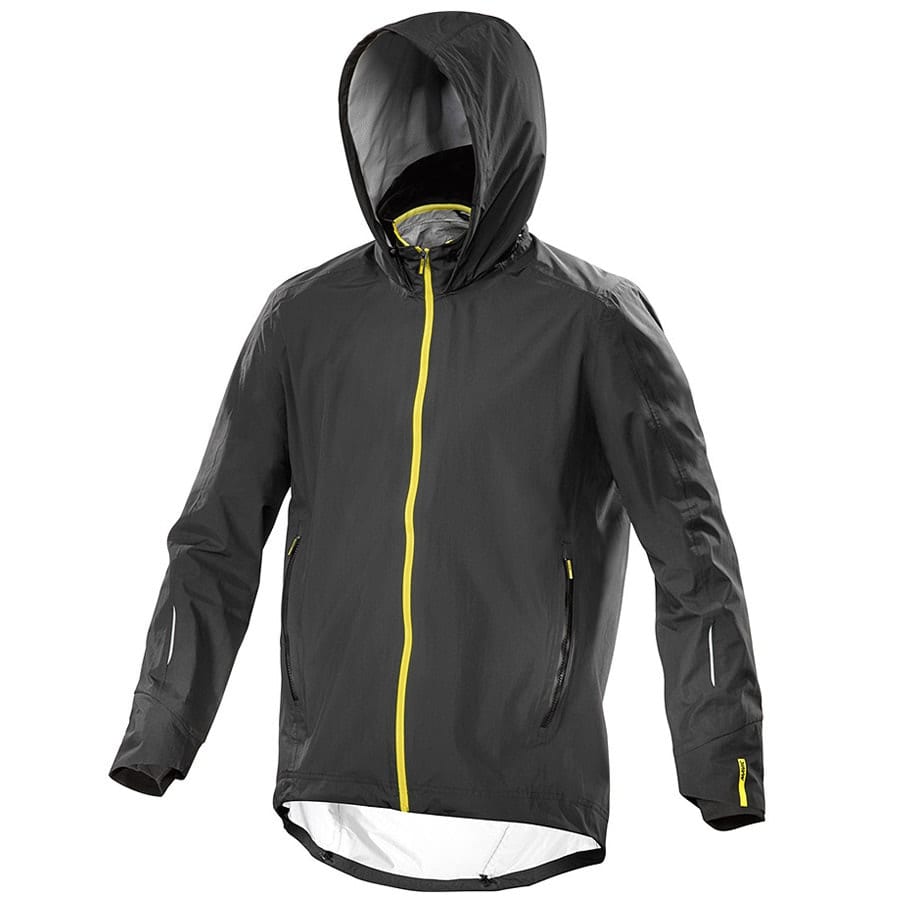Last Updated on 22 January 2025 by Cycloscope

Bikepacking clothes! What to wear on a cycle touring trip. The essential bicycle touring clothing packing list. With our personal outfit recommendations
Let’s talk bike-packing clothes! A topic often overlooked but quite important in bike touring is that of clothing – what clothes shall I pack? How many? Do I need a cycling jersey? Padded shorts?
The choice of what to wear backpacking and the clothes to take with you while on a cycle touring expedition is strongly dependent on the weather and climate you’re going to cycle. If, like most of the bike tourers, you plan to ride and camp mostly at temperatures above 0°C (32°F) don’t invest too much money in clothing. Most of the time, wearing ordinary sports clothes and maybe one or two bike jerseys will be just fine.
You won’t need the fanciest cycling clothes, so don’t break your bank over them, cheap cycling jerseys are usually more than enough, padded shorts are a matter of personal preference, while rain gear is what matters the most when cycle touring or bikepacking, so it could be worth investing a bit more into that. We put together this list of bikepacking clothing gear to help you think about what you may need for your next bicycle expedition, hope that helps. If it does, please share it with your friends and leave a comment below.
This article is part of our series about Essential Gear for Bicycle Touring and Bikepacking
Bike touring clothes packing list in a Nutshell

- Rain Jacket/Poncho
- Rain Pants
- Overshoes
- Goretex Shoes/SPD shoes/Hiking Sandals
- 2 Short Sleeves Cycling Jerseys
- 2 Pairs of Padded Cycling Shorts
- Arm Warmers
- Leg Warmers
- Gloves
- 2 Merino Base Layer (1 sleeveless or short sleeve/1 long sleeve)
- Merino Trousers
- Hiking Trousers
- Softshell Jacket
- Hardshell Jacket
- 3 Pairs of Socks
- 3 pairs of Underwear
- 2 normal cotton shirts
- 2 pairs of running/football shorts
- Sunglasses
Cycle Touring Clothes Essentials

Bikepacking Rain Gear
Staying dry under the rain is one of the biggest challenges of bikepacking, a challenge that nobody won yet.
That’s why a rain jacket is maybe the only piece of clothing that is almost mandatory for bicycle touring, I will suggest buying one with a hood.
Rain pants are useful too, and if you really want to do your best in this challenge, consider overshoes (shoe waterproof covers).
Some people prefer ponchos over rain jackets, that’s really a matter of personal choice. We recently got into using ponchos and they can be very effective, although not great with strong winds – they can flap over your face and even get dangerous.
Bikepacking Shoes
If you’re not into clipped shoes (see below) just wear whatever you feel comfortable with. I feel to recommend a standard pair of Goretex shoes, that could help your socks stay dry in wet weather. The shoe sole should be grippy to be firm on the pedal’s pins.
For summer weather sandals will do, find some with more rigid soles. Consider hiking-specific shoes if you want to explore some walking paths during your bike tour.
In the tropics, with hot weather and frequent showers, I loved cycling with simple Crocs-style shoes like these ones, plastic doesn’t get soaking wet and you can also use it to walk into the sea to avoid cuts.
check our in-depth articles:
> 14 Best Shoes for Cycle Touring & Bikepacking: SPD VS Flat
> Gravel Bike Shoes: 9 Best Cycling SPD Shoes for Gravel Riding
> 7 Best Flat MTB Shoes: Sturdy, Waterproof, & for all Budgets
> 10 Best Clipless Mountain Bike Shoes: SPD Cleats for MTB
What to wear bikepacking. Are cycling clothes needed?
I personally consider cycling-specific clothes absolutely non-essential but nice to wear sometimes. Have to admit that since we are using good quality cycling clothes (by Sigr Nordic) our riding comfort has increased dramatically.
- Padded shorts help a lot at the beginning of your tour, but fear not, your butt is going to feel sore anyway. It only takes time, plenty of it, to develop some sort of callus or whatever is it that will literally save your ass. It took three months for me but after that, I only felt a little pain when riding more than 7 hours a day.
Pro Tip: if saddle sores don’t go away, consider getting a different saddle, pain is usually felt at the sit bones. If there’s irritation, chafing cream can definitely help.
- Cycling Jerseys I find much nicer, if they are of decent quality they can help you sweat less, even though some of us just sweat like sows. Keep in mind that good quality doesn’t always mean expensive: I liked a lot 20€ Decathlon shirt, while some friends had expensive shirts from a famous brand developed mold in Southeast Asia.
Great for hot weather are those jerseys with a front zipper that opens all the way down, I cycle with my jersey open all the time.
Anyway, never bring more than 2 pairs of shorts and two shirts.
- Leg Warmers and Arm Warmers (compression sleeves) are a must, they eliminate the need for long sleeve jerseys or long pants, give you comfort when it’s chilly, and can protect you from UV rays. They weigh nothing and are ultra-compact.
- Light wind stoppers are also a very convenient addition to your bikepacking clothing list. They usually pack very compact and are perfect to quickly wear on downhills or when the sky gets cloudy.
- Gloves are nice on washboards and uneven roads, giving your wrists a little relieved. I find them unbearable in hot temperatures. They are of course fundamental in lower temperatures, already below 10°C your hand will ache when going downhill. Read our article about the best cycling gloves for winter.
- Clipped Shoes, if you really like them. You already know they help with efficiency, how much is a controversial topic. Do not use race shoes, find some casual ones that you could also wear as everyday shoes, something you could use to walk, like the Five Ten Kestrel Lace or many other models. (See the links above in the shoe section)
- Cycling-specific eyewear or ordinary sunglasses are very important for your eyes’ health, and something many of us couldn’t cycle without.
Winter Bikepacking Clothing
Here’s where more technical, high-end gear starts to be meaningful. Bear in mind that you’ll ride on heavy winter clothing only when the temperatures are around zero degrees Celsius or below, or yes, in the downhill.
Most of the time the effort of cycling will be enough to keep you warm. It’s mostly when camping that you’ll be doomed to freeze. We are using merino baselayers by Green Rose and love them, read our review here.
Our kit for lower temperatures consists of:
- 1 short sleeve/sleeveless Base Layer (merino wool)
- 1 long-sleeve Base Layer (merino wool)
- 1 pair of Merino wool trousers
- 1 or 2 Windstopper (Softshell and/or Hardshell) to be used one above the other in case of low temperatures (to do so, one should be larger). Read our guide “best cycling jackets for Winter“.
- 1 Pair of Winter Trousers (read about it “Winter Cycling Pants: 7 Best Tights and Bibs for Cold Weather Biking“.
- 2 or 3 pairs of Socks
This should be enough until a few degrees below zero. If you plan something a bit more extreme, consider lightweight insulated down jackets like this one.
Ordinary Clothing
Our first two-year tour in Asia was done in generally warm climates, and we mostly cycled on ordinary clothes. The stuff you can find in markets everywhere for very cheap.
We loved football shorts and sleeveless t-shirts (camisole for Elena), I personally enjoyed a cheap clip-on button shirt, that I could open with an easy gesture when sweating like hell on the steep slopes of Indonesia.
A bandana is a nice add-on, you can keep it wet under your helmet for a refreshing sensation, also a visor helps a lot under the sun. Don’t forget your underwear too! Usually, 3 pairs will be enough, they are easy to wash – sport or hiking underwear is ideal.
Expert tip: Remember! Wearing underwear with padded cycling shorts is a bad idea. Use your underwear for off-the-bike activities or when cycling without padding.
Another handy item to have on a bike tour is a money belt, those have a secret pocket where to store your cash, useful for countries with high robbery risks.
Have a look at
> The Best Online Stores for Bicycle Touring and Bikepacking

What to wear bikepacking? FAQs about cycle touring clothes
What is the best fabric for bikepacking?
When it comes to choosing fabric for bikepacking clothes, you should consider a few key factors, such as breathability, moisture-wicking properties, durability, and weight. The best fabric will depend on the specific weather conditions and personal preferences of the cyclist. Some commonly used fabrics for bikepacking clothes are:
Merino Wool: Merino wool is a natural fiber known for its excellent moisture-wicking properties, breathability, and odor resistance. It regulates body temperature effectively, keeping you warm in cold conditions and cool in hot weather. Merino wool is also soft and comfortable, making it a popular choice for base layers, jerseys, and socks.
Synthetic Fabrics (Polyester, Nylon, and Blends): Synthetic fabrics like polyester and nylon are commonly used in bikepacking clothing due to their moisture-wicking capabilities and quick-drying properties. They are lightweight and often more affordable than natural fibers. Look for moisture-wicking and breathable synthetic fabrics to keep you comfortable during long rides.
Technical Blends: Many modern bikepacking clothes use technical blends that combine the best properties of various fabrics. For example, you might find garments with a mix of merino wool and synthetic fibers, providing the benefits of both materials.
Durable Fabrics: Bikepacking involves exposure to various elements, so it’s essential to consider durability. Look for fabrics with reinforced areas on high-wear zones, such as seat areas, knees, and elbows. Ripstop nylon is a common choice for its tear-resistant properties.
Waterproof and Water-Resistant Fabrics: Depending on your bikepacking destination and expected weather conditions, you may want clothes with water-resistant or waterproof capabilities. GORE-TEX and other similar materials are often used for jackets and pants to keep you dry in rainy conditions.
UV Protection: If you’ll be exposed to strong sunlight, consider fabrics that offer UV protection to shield your skin from harmful rays.
Remember that layering is essential in bikepacking, so having a mix of clothing made from different fabrics can help you adapt to changing weather conditions. It’s also a good idea to try on and test different garments to ensure they fit well and meet your comfort and performance needs during your bikepacking adventures.
What do you wear to bike camping?
What you wear for bike camping, also known as bikepacking, will depend on the specific weather conditions and the duration of your trip. As a rule of thumb, here is an essential list:
Cycling Jersey or T-Shirt: A moisture-wicking cycling jersey or a technical t-shirt is a good choice for your upper body. These garments are designed to keep you cool and dry by wicking away sweat from your skin.
Cycling Shorts or Tights: Padded cycling shorts or tights provide comfort during long rides by reducing chafing and pressure on your sit bones. They also help with moisture management.
Base Layers: Depending on the weather, you may want to wear a lightweight base layer under your jersey to regulate temperature and keep you comfortable.
Cycling Socks: Moisture-wicking cycling socks will keep your feet dry and help prevent blisters.
Cycling Shoes: Stiff-soled cycling shoes provide efficient power transfer from your legs to the pedals. Choose a comfortable pair suitable for your type of cycling, whether road, mountain, or hybrid.
Cycling Gloves: Padded cycling gloves protect your hands from road vibrations and provide a better grip on the handlebars. In colder weather, consider using full-finger gloves for extra warmth.
Helmet: Always wear a properly fitting helmet for safety during your bikepacking adventures.
Outerwear:
Jacket: Depending on the weather forecast, pack a lightweight, breathable, and waterproof jacket to protect yourself from rain and wind.
Vest: In milder conditions, a cycling vest can provide extra core warmth without overheating.
Shirt/Pants for Camp: For time spent at the campsite, consider bringing a pair of comfortable, non-cycling-specific shorts or pants and a t-shirt to wear off the bike. If the weather is chill, you should also bring a sweater.
Camp Shoes/Sandals: Having a pair of lightweight camp shoes or sandals is great for giving your feet a break and allowing your cycling shoes to dry out.
Headwear: A cycling cap or bandana can help keep sweat out of your eyes and provide some protection from the sun.
Sunglasses: Protect your eyes from the sun, wind, and debris with a pair of cycling sunglasses.
Remember to check the weather forecast for your planned route and destination, and consider the length of your trip when packing clothes. Layering is key to adjusting for temperature changes during the day and night. Always pack lightweight and moisture-wicking clothing to stay comfortable and dry throughout your bike camping journey.
How to layer for bikepacking?
Layer for bikepacking by wearing a moisture-wicking base layer, a breathable cycling jersey, a lightweight, weather-resistant softshell jacket for wind protection and eventually a hardshell jacket for extra core warmth and rain protection. For your lower half, padded cycling shorts or tights directly at skin level (no underwear), eventual rain pants, and moisture-wicking socks. Pack a lightweight camp outfit for off-bike time..





